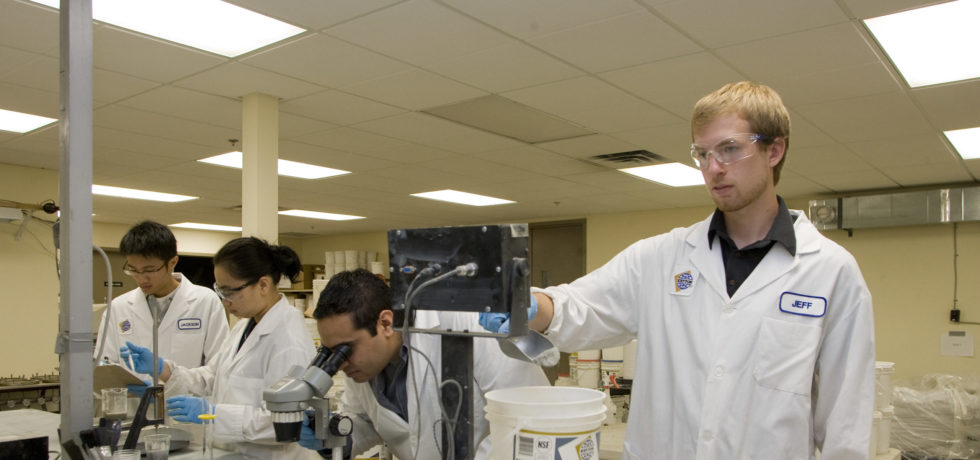Whether you’re an architect, engineer, or contractor, you’ve likely had to take some time to consider one of the most common building materials out there: concrete. In fact, according to Architect Magazine, it’s the “second-most consumed substance after water.” And there are many reasons why. After all, concrete makes structures durable enough to withstand earthquakes and strong enough to handle high temperatures from fire. It even has a great deal of flexibility that allows architects to shape concrete in a wide array of unique and visually compelling forms.
Despite its many advantages, concrete is a porous material, which makes it easy for water to seep through it. And no one in construction wants to have a leak in their building somewhere or be known as the person who let that happen.
To prevent this, many turn to external waterproofing membranes. However, many others are seeking newer and more reliable alternatives, such as concrete waterproofing admixtures.
Like our very own Krystol Internal Membrane™, these admixtures go straight into the concrete mix at the time of batching. And from there, they go on to help give the concrete an innate resistance to the effects of water ingress.
Of course, there are many brands that offer such waterproofing admixtures, usually known as crystalline waterproofing admixtures.
So what makes them different from one another? Is it just the price? Or is there something more? How do we define them on a micro level?
To find out, Kryton’s Technical Director Alireza Biparva teamed up to conduct research with the University of Victoria’s researchers Rishi Gupta and Pejman Azarsa. This collaboration turned into the first published study of its kind.
And here today in an in-depth interview, both Alireza and Pejman will guide us through what makes this research so fascinating and how it will help further define admixtures for years to come.
First, thank you both for taking the time to conduct this interview with us! Could you tell us what this paper is all about in your own words?
Before delving into the paper’s topic, let’s consider the reason for its existence.
To start, the porous nature of cement-based materials is one of the main reasons they are prone to degradation. Due to this porosity, certain aggressive chemical agents (e.g., corrosive chloride ions) found in water can penetrate the concrete. This then endangers the concrete’s microstructure, leading to a reduction in its overall durability.
To avoid such situations, there is an increasing interest in innovative and sustainable approaches that can inherently reduce the permeability of cementitious materials. The thought is that this will improve the concrete’s durability at different scales.
With that in mind, the research paper focuses on the micro scale. It explores crystalline waterproofing admixtures (which are considered to be a type of permeability-reducing admixture as noted in the American Concrete Institute’s 212.3R-16 Report on Chemical Admixtures for Concrete). More specifically, it explores the admixtures’ effect on microstructural features, hydration products, and chemical compositions of cement-based composite materials.
It attempts to bridge the current gap in knowledge on the durability of these admixtures at the micro-level. However, it should be noted that this study only captures a part of the multiscale research work conducted over four years in collaboration with the University of Victoria.
This is the first study of its kind, right? What made you choose to do this particular study?
Yes, this research is a unique study since it discusses in detail, for the very first time, the microstructural behavior of waterproofing admixtures and their influences on hydration products and chemical elements. One of the main reasons we chose to do the study was to demonstrate the major differences between crystalline waterproofing admixtures.
There have been other studies that have focused on these admixtures. However, those studies typically looked at the role that the admixtures play in water permeability reduction. Until our paper was published, no study had fundamentally looked at what typically forms in the concrete’s microstructure and what chemical reactions occur there.
Similarly, another unique aspect of the study is the development of a technique used for examining microstructures and chemical reactions. It involved the use of a scanning electron microscope (SEM). In turn, we were able to address the research challenges that come with sample preparation stages, which could potentially help other researchers in the field avoid similar challenges.
What was the process for conducting it like?
We divided the study into three phases.
In Phase I, we attempted to calculate the total matrix porosity for both a control system and an admixture-modified system using a developed image processing technique. We then took these images in a facility with one of the world’s highest magnification SEMs.
Then, in Phase II, we planned to identify chemical compounds and the formation of needle-shaped crystals on the polished surface of mortar samples. Although chemical phases have successfully been identified using the X-ray spectrum, it was difficult to observe the needle-shaped crystals claimed by manufacturers.
So Phase III was designed to detect the presence of needle-like crystals on the fracture surface of samples and identify the nature of their chemicals.
Did you come across any challenges during your research? If so, how did you and your team overcome them?
One of the main challenges was to observe the formed needle-like crystals on the polished surface of the mortar samples. For instance, we determined it was likely that the crystals were damaged from the harsh conventional surface preparation that was needed to polish the mortar samples. It seemed likely as this could result in the crystals being removed from the surface. As a result, we looked for an alternative surface preparation technique that supported crystal growth, as claimed by the manufacturer.
What did you think was most interesting about the research?
The most exciting finding of this study was discovering the microstructural behavior of waterproofing admixtures and how their crystal formation helps create an impermeable concrete matrix while enhancing more durable structures. It was especially exciting knowing that all crystalline admixtures may form some needle-like crystals. However, another interesting outcome of this study was how it proved not all needle-shaped crystals have the same chemistry and can even contain different chemical compositions. In some cases, they can even form ettringite, which is typically not harmful to concrete unless its formation is delayed.
How will this research impact the construction industry as a whole?
Producing more durable and sustainable concrete structures can benefit all construction sectors and stakeholders by saving on costs and time for the lifecycle of a project. However, this study demonstrates that not all waterproofing admixtures and their effects on the concrete matrix are similar. So their impact on concrete durability is also different. Overall, the use of crystalline waterproofing admixtures can significantly contribute to developing durable concrete elements. However, because they are all different, designers should choose the most appropriate admixtures based on their particular needs.




